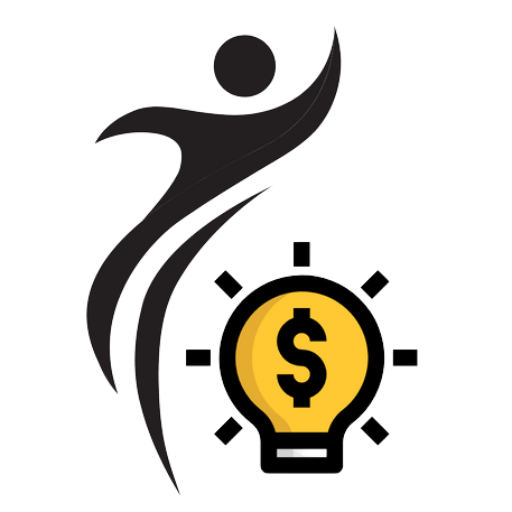Pulse of Life All About Heart Rate | Understanding Its Importance for Health and Fitness
Discover Heart Rate’s Role, Learn about heart rate’s impact on wellness, exercise, & monitoring. Optimize your heart health today. Pulse of Life All About Heart Rate, Understanding Its Importance for Health and Fitness, When it comes to maintaining good health and fitness, understanding your heart rate plays a crucial role. Your heart rate, which refers to the number of times your heart beats per minute, is an indicator of your cardiovascular health and overall well-being. In this article, we will delve into the various aspects of heart rate, its significance, factors influencing it, and how to measure and manage it effectively.
 |
| Pulse of Life All About Heart Rate | Understanding Its Importance for Health and Fitness |
Table of Contents
- The Basics of Heart Rate
- Why Heart Rate Matters for Health
- Understanding Resting Heart Rate (RHR)
- Target Heart Rate Zones for Exercise
- Factors Affecting Heart Rate
- How to Measure Heart Rate
- Heart Rate Monitors: Types and Benefits
- Heart Rate and Exercise Intensity
- Heart Rate Variability: What It Indicates
- Impact of Stress on Heart Rate
- Heart Rate and Age: The Connection
- Healthy Lifestyle Choices for Optimal Heart Rate
- Medical Conditions and Heart Rate
- Tracking Heart Rate Trends Over Time
- Conclusion
The Basics of Heart Rate
Heart rate is a fundamental physiological measure that represents the number of times your heart contracts and pumps blood throughout your body in a minute. It is typically measured in beats per minute (bpm). A normal resting heart rate for adults is usually between 60 and 100 bpm.
Why Heart Rate Matters for Health
Understanding your heart rate is essential because it offers insights into your cardiovascular health. A higher resting heart rate could indicate potential heart health issues, while a lower resting heart rate might imply better cardiovascular fitness. Monitoring your heart rate can help you make informed decisions about your lifestyle and exercise choices.
Understanding Resting Heart Rate (RHR)
Resting heart rate (RHR) is the number of heartbeats per minute while your body is at rest. It’s a reliable indicator of your cardiovascular fitness and overall health. Athletes and individuals in good shape tend to have lower RHR, as their hearts are more efficient at pumping blood.
Target Heart Rate Zones for Exercise
Different forms of exercise require varying levels of heart rate. Understanding your target heart rate zones can help you tailor your workouts for maximum benefit. Whether you’re aiming for fat burning or cardiovascular improvement, staying within the appropriate heart rate range is crucial.
Factors Affecting Heart Rate
Numerous factors can influence your heart rate, including age, fitness level, genetics, stress, medications, and external stimuli. Being aware of these factors can help you interpret your heart rate measurements accurately.
How to Measure Heart Rate
Measuring heart rate can be done manually by checking your pulse or using modern technology like heart rate monitors. The most common locations for checking your pulse include the wrist and neck. Heart rate monitors, often found in fitness trackers or smartwatches, provide real-time data during exercise.
Heart Rate Monitors: Types and Benefits
Heart rate monitors come in various forms, from chest straps to optical sensors on wearables. These devices offer accurate heart rate data, enabling individuals to optimize their workouts and track their progress over time.
Heart Rate and Exercise Intensity
Understanding the relationship between heart rate and exercise intensity can help you customize your workouts. Different exercise intensities correspond to different heart rate zones, each with unique benefits for your fitness goals.
Heart Rate Variability: What It Indicates
Heart rate variability (HRV) refers to the variation in time between successive heartbeats. It is considered an indicator of the autonomic nervous system’s health and resilience. Higher HRV is generally associated with better stress management and overall health.
Impact of Stress on Heart Rate
Stress can significantly impact your heart rate. In times of stress, your body releases stress hormones that increase your heart rate. Chronic stress can have adverse effects on your cardiovascular health if not managed effectively.
Heart Rate and Age: The Connection
Heart rate tends to change as you age. Resting heart rate generally increases with age, but regular exercise can mitigate this effect. Monitoring your heart rate as you get older can provide insights into your heart’s health.
Healthy Lifestyle Choices for Optimal Heart Rate
Maintaining a healthy lifestyle is essential for optimal heart rate and cardiovascular health. Adequate exercise, a balanced diet, sufficient sleep, and stress management all contribute to a healthy heart rate.
Medical Conditions and Heart Rate
Certain medical conditions, such as arrhythmias and heart diseases, can lead to abnormal heart rates. Regular monitoring and medical guidance are crucial for individuals with such conditions.
Tracking Heart Rate Trends Over Time
Tracking your heart rate trends over weeks and months can help you gauge the effectiveness of your lifestyle changes and exercise routines. Positive trends indicate improved cardiovascular fitness.
Conclusion
In conclusion, understanding your heart rate and its implications for your health and fitness is essential. Monitoring your heart rate, considering its factors, and making informed lifestyle choices can contribute to a healthier heart and overall well-being.
Do you want to know about Heart Healthy Diets Tips
FAQ’s
Q1: Is 96 too high of a resting heart-rate?
Ans: A resting heart rate of 96 may be considered slightly elevated. The normal range for resting heart rate is typically between 60 and 100 beats per minute. Factors such as age, fitness level, and overall health play a role in determining what is considered normal for an individual. If you’re concerned about your heart rate, it’s a good idea to consult a medical professional. They can provide personalized advice based on your specific circumstances. It’s worth noting that regular exercise, a balanced diet, and stress management can contribute to maintaining a healthy heart rate.
 |
|
What is considered a healthy resting heart rate |
Q2: Cardiology: What is considered a healthy resting heart rate?
Ans: A healthy resting heart rate typically falls between 60 and 100 beats per minute (BPM). This range can vary based on factors like age, fitness level, and overall health. For adults, a lower resting heart rate often indicates good cardiovascular fitness, while a higher rate might suggest the need for lifestyle adjustments. Athletes and highly active individuals may have resting heart rates below 60 BPM due to their strong cardiovascular systems. It’s important to note that individual variations exist, so consulting a healthcare professional is recommended to assess what’s considered healthy for you. Maintaining a balanced diet, regular exercise, managing stress, and getting enough sleep can all contribute to achieving and maintaining a healthy resting heart rate.
Q3:Is a heart rate of 104 bpm dangerous?
A resting heart rate of 104 bpm (beats per minute) is generally higher than the normal range for adults, which is typically between 60 and 100 bpm. While it may not be immediately dangerous, it could indicate an underlying issue or heightened stress. If it persists or is accompanied by other concerning symptoms like chest pain or dizziness, it’s advisable to consult a healthcare professional for evaluation and guidance.
Q4: Does the heart rate increase when there is stress or anxiety?
Yes, stress and anxiety can lead to an increased heart rate. When you’re stressed or anxious, your body’s “fight or flight” response is activated, which releases stress hormones like adrenaline. These hormones can cause your heart to beat faster and your blood pressure to rise. This is a normal physiological response to stress, but chronic stress or anxiety can have long-term effects on your heart health if not managed appropriately.
Q5: Can a pulse oximeter detect heart problems?
A pulse oximeter primarily measures the oxygen saturation level in your blood and your heart rate. While it can provide valuable information about your overall cardiovascular health by monitoring your heart rate, it is not a comprehensive diagnostic tool for detecting specific heart problems.
It can, however, help identify irregularities in heart rate or oxygen levels that may warrant further evaluation by a healthcare professional. To diagnose specific heart problems, additional tests and evaluations, such as an ECG (electrocardiogram) or echocardiogram, are typically needed. If you suspect you have a heart condition or experience symptoms like chest pain, palpitations, or shortness of breath, consult a healthcare provider for a proper assessment.
Q6: What is the future of the accurate heart rate monitor watch?
Heart rate monitor watches’ future includes improved accuracy via sensor and algorithm enhancements, potential for additional metrics like blood pressure and ECGs, deeper integration with health ecosystems, longer battery life, and increased data security. They’ll likely find expanded healthcare applications, aiding remote patient monitoring and early heart condition detection.
Q7: What are the potential compactions of a pulse?
Complications that can arise from irregular or abnormal pulse patterns, or arrhythmias, include:
- Reduced Blood Flow: Arrhythmias can disrupt the normal pumping function of the heart, leading to reduced blood flow to vital organs and tissues.
- Blood Clots: In some cases, irregular pulses can increase the risk of blood clot formation, which may lead to strokes or other cardiovascular issues.
- Heart Failure: Prolonged arrhythmias can weaken the heart muscles, potentially causing heart failure over time.
- Fainting (Syncope): Certain arrhythmias can cause a sudden drop in blood pressure, leading to fainting or loss of consciousness.
- Stroke: If an irregular pulse is associated with atrial fibrillation (AFib), it can increase the risk of stroke due to blood clots forming in the heart.
- Chest Pain: Arrhythmias can lead to angina (chest pain) and other symptoms of heart disease.
- Cardiac Arrest: In severe cases, certain arrhythmias can lead to cardiac arrest, a life-threatening condition where the heart stops beating effectively.

